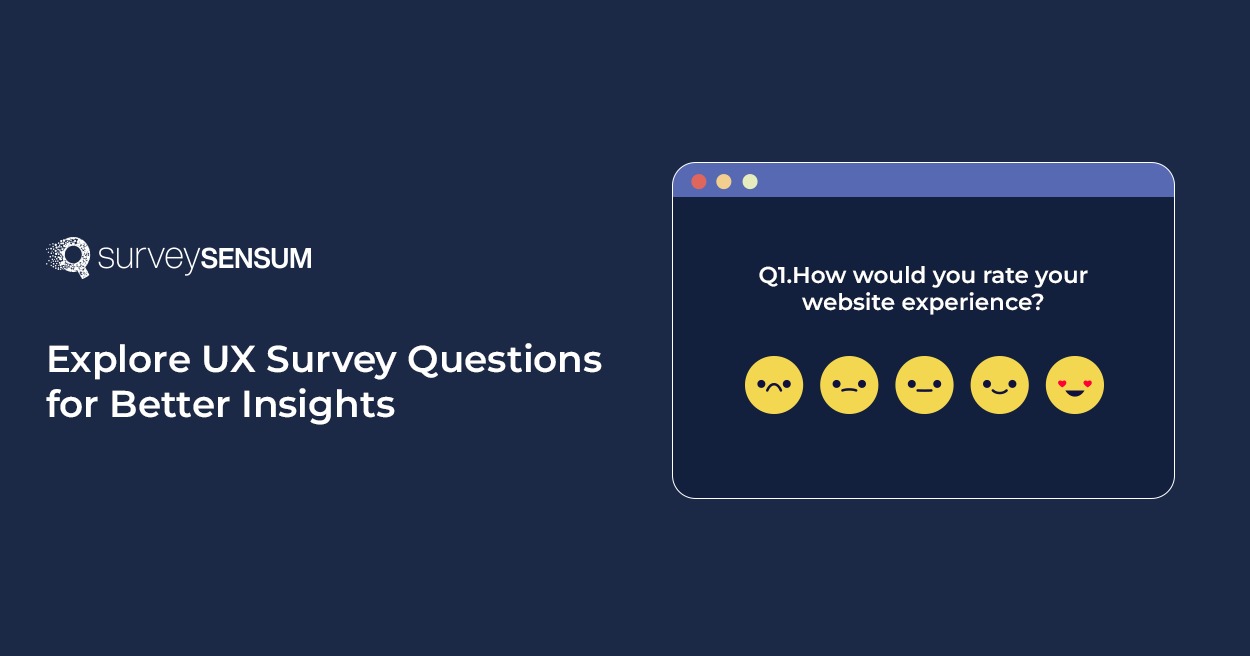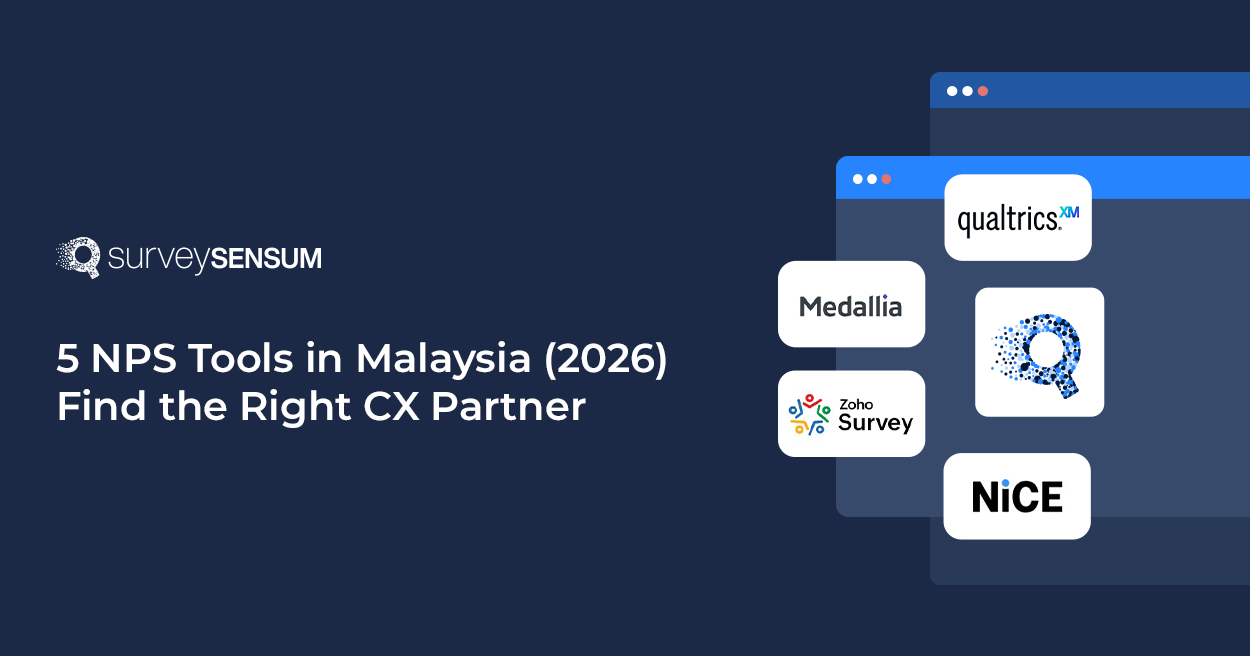

Companies that prioritize user experience see a 60% higher profit than those that don’t.
UX surveys serve as a bridge between companies and their users, offering valuable insights that guide design and functionality. These surveys are designed to be straightforward, making it easy for users to share their thoughts and experiences. By asking the right questions, you gain clarity on what users like, what they struggle with, and what they expect from your app.
With the right survey-builder tool, you can create effective UX surveys, distribute them across various platforms, and connect with your audience wherever they are.
Let’s explore effective UX survey questions that can lead you to meaningful improvements and create a better user experience for everyone.
What are UX Survey Questions?
UX survey questions gather feedback from users about their experience with a product or service to understand how users interact with your app, what they enjoy, and where they face challenges.
By asking targeted UX survey questions, you gain insights into user behavior, preferences, and satisfaction levels. This feedback is crucial for identifying areas that need improvement and for making informed decisions about updates or new features. There are several types of UX survey questions, including multiple choice, open-ended, and rating scale questions. Each type serves a unique purpose.
51+ Essential UX Survey Questions Examples
With the right UX research survey questions, you can gather insights that drive improvements and enhance user satisfaction. Here’s a list of UX survey questions that cover various aspects of user experience, divided into five categories:
1. Navigating the Customer Experience: General Usability
General usability survey questions help you assess how easily users can navigate your product or service, providing insights into user interactions. By understanding ease of use and accessibility, you can identify and address potential roadblocks that hinder engagement and satisfaction.
Here are the survey question examples:
- How would you rate your overall experience using our app?
- How intuitive is the navigation in our app?
- Did you encounter any challenges while using our product?
- How clear are the instructions provided in the app?
- How quickly can you complete tasks using our app?
- How often do you use our app?
- What primary tasks do you perform most often?
- Have you faced any technical issues? If so, please describe.
- Would you recommend our app to a friend? Why or why not?
2. Feature Feedback: What Works and What Doesn’t
Collecting feedback on specific features is essential for uncovering what truly resonates with users and identifying areas that may need improvement. This insight is vital for prioritizing enhancements, and ensuring your product evolves to meet user needs and expectations.
Here are some questions you might consider including:
- Which feature do you find the most valuable?
- Are there features you rarely use? If yes, why?
- How would you rate the performance of our key features?
- What new features would you like to see in future updates?
- How well do the existing features meet your needs?
- How effective is the search functionality in our app?
- Do you find the notifications helpful? Why or why not?
- How satisfied are you with our customer support feature?
- What do you think about the onboarding process?
3. Design Matters: Aesthetics and Usability
94% of first impressions are design-related – This highlights the crucial interplay between aesthetics and usability in crafting a positive user experience. By exploring users’ perceptions of design, you can balance visual appeal and functional effectiveness, resulting in a more engaging and user-friendly product. Reinforce your design with UX research tools in the prototype stage and see if users are interacting with your product as it was intended.
Here are some questions to consider asking:
- How visually appealing do you find our app’s design?
- Does the design enhance your overall user experience?
- How would you rate the layout of our app?
- Does the design meet your expectations for this type of product?
- What elements of the design do you enjoy the most?
- Are there design elements that distract you from using the app?
- How well does the design support the app’s functionality?
- Is the text easy to read on all screens?
- What changes would you suggest for the design?
4. Customer Satisfaction Check: Gauging User Happiness
Measuring customer satisfaction is key to understanding the overall effectiveness of your product. By asking users about their experiences and feelings, you can uncover valuable insights into what’s working well and pinpoint areas that need improvement.
Here are some examples of questions you can ask:
- How satisfied are you with your overall experience using our app?
- What do you love most about our product?
- How does our app compare to similar ones you’ve used?
- Have you had any positive experiences with our customer service?
- What could enhance your level of satisfaction?
- How well does our product meet your expectations?
- Do you often feel frustrated while using our app?
- How satisfied are you with the app’s speed and performance?
- What additional features would improve your satisfaction?
5. Your Voice Matters: Suggestions for Product Improvement
Survey questions for suggestions on improvement empower users to share feedback, fostering a sense of involvement in your product’s development. This input provides valuable insights into their needs, allowing you to make targeted enhancements. By actively listening to users, you improve their experience and strengthen their connection to your brand.
Here are the survey question examples:
- What improvements would you suggest for our app?
- Are there any features you think are missing?
- How can we make your experience even better?
- Would you appreciate more tutorials or guides?
- What obstacles do you face when using our app?
- How can we enhance the user-friendliness of our app?
- What navigation changes would you recommend?
- Would you find value in a user community or forum?
- How can we improve our customer support services?
Bonus Questions: Getting to Know Your Customers
Including demographic and behavioral questions allows you to better understand your user base. This information is invaluable for tailoring your product and marketing strategies to meet the specific needs and preferences of your audience.
Here are the survey question examples:
- How likely are you to participate in future surveys?
- Would you be interested in joining a user feedback group?
- Do you have any valuable suggestions for us?
- How do you prefer to receive updates about our app?
- What other apps do you use regularly?
- What’s your favorite feature in our app?
- How did you first hear about our product?
- Do you feel your feedback is valued by our team?
- What motivates you to use our app regularly?
These questions are crafted to help you gather meaningful insights into user experiences and preferences, enabling you to make informed improvements that enhance satisfaction and usability.
Conclusion
As we wrap up, remember that well-crafted UX survey questions are your gateway to understanding user needs and enhancing their experience. UX surveys help you gain insights into your product’s usability and your users’ overall experience. When done right, they can guide you in designing a better product that helps users accomplish their goals more efficiently.
And to create and conduct UX surveys effortlessly, consider using SurveySensum. This tool not only helps you design surveys but also analyzes feedback in real-time using AI text analytics software. With clear insights at your fingertips, you can quickly identify trends and make informed decisions that elevate your user experience.















